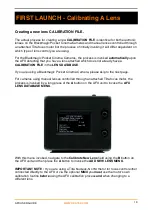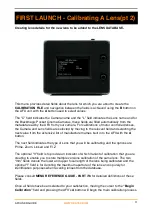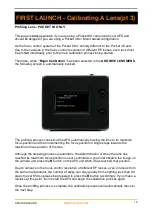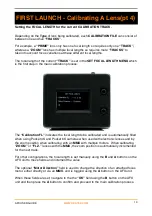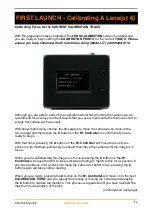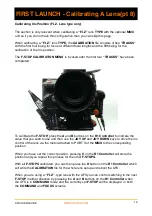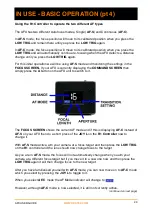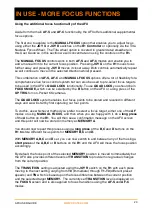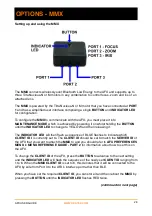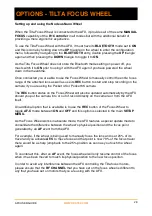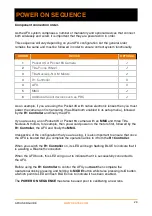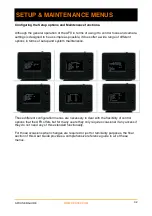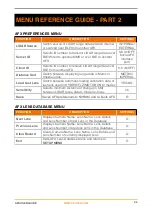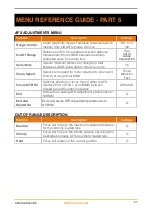
Using the additional focus functionality of the AFX
Aside from the main
AF-S
and
AF-C
functionality, the AFX offers additional supplemental
focus options.
The first one to explore is the
MANUAL FOCUS
option that enables you to adjust focus
using either the
JOY U
or
JOY D
switches on the
R1 Controller
or optionally via the Tilta
Nucleus Focus Wheel. The Tilta wheel option is covered in greater detail elsewhere in
this User Guide so in this section we will concentrate on using the controls on the
R1.
The
MANUAL FOCUS
controls work in both
AF-S
and
AF-C
modes and enable you to
add a manual trim to the current focus position. Pressing
JOY U
on the
R1
moves focus
further away and pressing
JOY D
moves it closer away. Both controls automatically repeat
so will continue to move in the selected direction whilst pressed.
This combination of
AF-S, AF-C
and
MANUAL FOCUS
options offer a lot of flexibility for a
comprehensive live focus control system but can also be used to pre-select focus targets
to be used in the AFX’s
QUAD LOCK
functionality. To use
QUAD LOCK
you should be in
FOCUS MODE,
which can be selected by the
B
button on the AFX or a long press of the
UP TRIG
for non-Pocket 6K cameras.
The
QUAD LOCK
system enables four focus points to be stored and recalled in different
ways and we will start by first capturing our four points.
To do this, use whichever method you prefer to select a focus target, either one of the
AF
modes or using
MANUAL FOCUS
, and then when you are happy with it, do a
long press
of the
A
button on the
R1
. You will then see a confirmation message on the AFX screen
and this point will now be stored in memory as
MEMORY A
.
You should now repeat this process using a
long press
of the
B,C
and
D
buttons on the
R1 to
store different focus points for
MEMORY B,C
and
D.
With
MEMORY A,B,C
and
D
set, you can now switch to and between any of them using a
short press
of the
A,B,C
or
D
buttons on the
R1
and the AFX will move the focus position
accordingly.
By default, the focus point of the selected
MEMORY
position is moved to immediately but
the AFX also provides different levels of
TRANSITION
to provide more gradual changes
from the current position.
The
TRANSITION
setting is adjusted using the
JOY R
switch on the
R1
with each press
moving to the next setting varying from
T0
(immediate) through
T1-T3
(different preset
speeds) and
TN
which is based upon the focus difference between the current position
and the selected target
MEMORY.
The currently set
TRANSITION
level is displayed on
the
FOCUS
screen and is also applied to focus transitions using the
AF-S
and
AF-C
modes.
AFX USER GUIDE
WWW.CDATEK.COM
23
IN USE - MORE FOCUS FUNCTIONS


